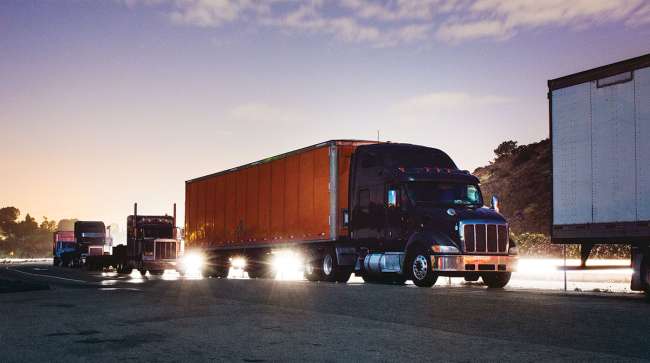Staff Reporter
California Finds Truck Parking Shortage Complicated by EV Mandates

[Stay on top of transportation news: Get TTNews in your inbox.]
California is among the leaders pushing for wider adoption of zero-emission commercial vehicles, but the state is confronting the dual challenges of resolving a shortage of truck parking and the need to build charging infrastructure accessible to tractor-trailers.
This is especially true near major container ports — a key area targeted for cleaner truck operations — according to a state transportation expert.
“It’s not a dream that zero-emission trucks are going to happen someday in California — they are happening right now,” said Eric Fredericks, freight policy coordinator at the California State Transportation Agency. “It’s a big challenge, and it’s especially important for our owner-operators, who sometimes park near where they live.”

Fredericks
Fredericks discussed linking truck parking with the state’s zero-emission executive orders and regulations during a Sept. 30 National Coalition on Truck Parking virtual workshop, which drew 300 online participants.
Representing the California Department of Transportation — which is part of CalSTA — Fredericks is helping establish the state’s port and freight infrastructure program. He noted that a study of state truck parking revealed “there’s essentially no truck parking with[in] 60 miles of the major container ports,” a potential problem for California’s zero-emission vehicle plans.
The California Air Resources Board is developing a medium- and heavy-duty zero-emission fleet regulation “to achieve a zero-emission truck and bus California fleet by 2045 everywhere feasible, and significantly earlier for certain market segments such as last-mile delivery and drayage applications.”
Fredericks characterized having available truck parking with EV infrastructure as “a huge issue” in meeting mandates.
Caltrans is partnering with the state energy commission to assess the impact of zero-emission heavy trucks on its electricity load, forecasting and modeling to determine EV charging needs for heavy trucks, and studying standardization and how to incorporate EV infrastructure in truck parking.
He stressed that planners have learned that charging infrastructure, “can’t fit into the normal footprint of [truck] parking spaces. So we need to build more truck parking spaces. That’s really critical to make sure we have charging infrastructure and we don’t reduce the number of available spaces to meet our client goals.”

Courtesy CalSTA
Given the parking shortages — especially around ports — state officials have been gathering input from multiple stakeholders, including trucking companies, individual owner-operators, the California Trucking Association, warehouse representatives, electric truck manufacturers and other government agencies.
Researchers also are concerned about the safety implications of insufficient truck parking, as an average of one passenger vehicle per day is striking a truck parked along some highway routes. Fredericks indicated the findings could be low as the research does not incorporate the entire state.
“This is the first time we know that, in California, we really measured the safety impacts of having trucks parked on the side of the highways,” he said. “We especially found a lack of truck parking near areas where there [is] a lot of freight in warehousing facilities.”
Fredericks said the state has developed a truck parking demand model to help determine needs that arise at individual types of facilities, and devise solutions to mitigate demand. He added that officials are looking for private sector partnerships for new truck parking sites, since not all state-owned land is suitable.
Want more news? Listen to today's daily briefing below or go here for more info:

